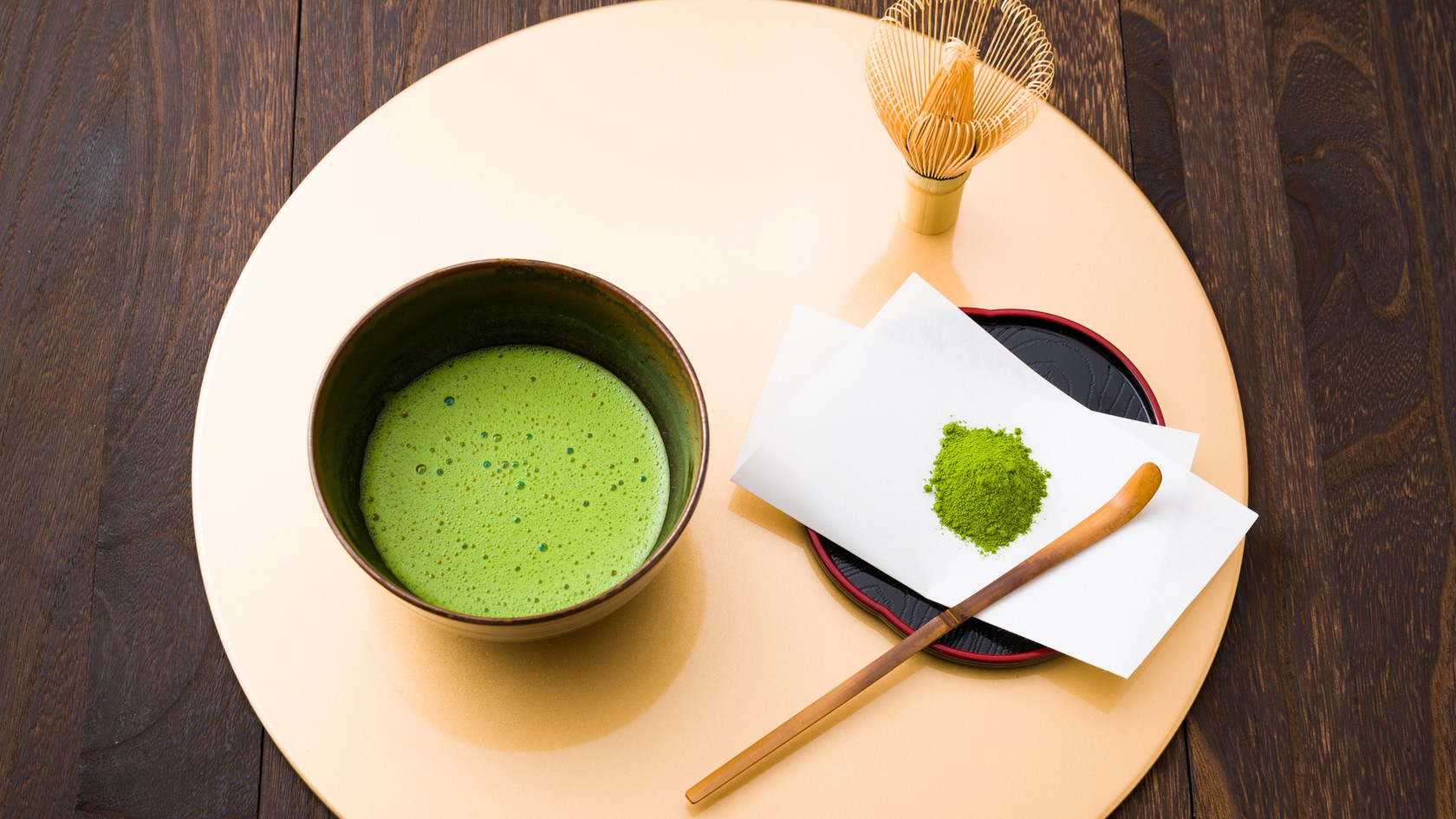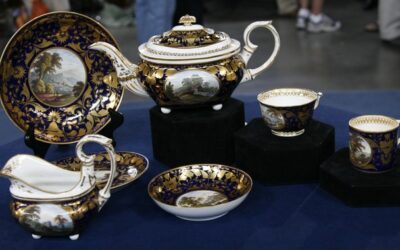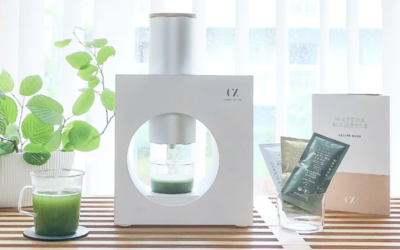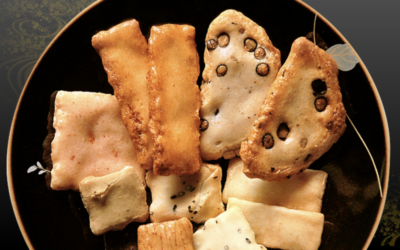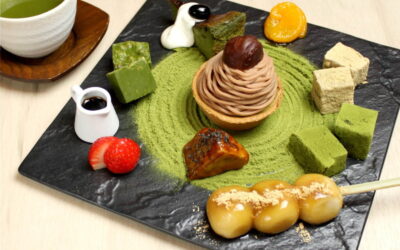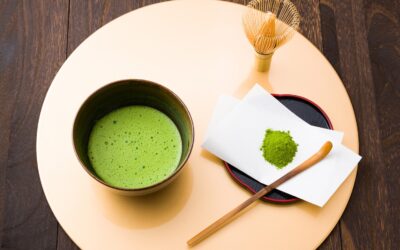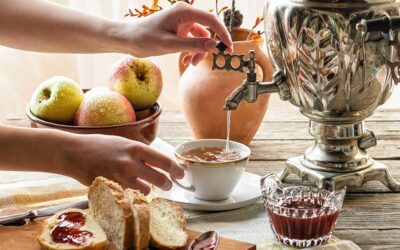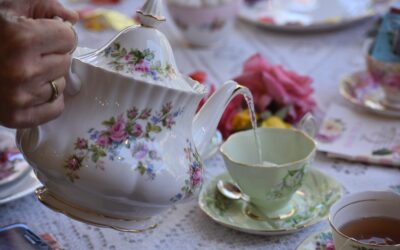Matcha is now known worldwide, being sold in coffee shops, supermarkets specializing in organic products, and even across the ocean in Western countries. In particular, matcha is attracting attention as a “superfood” that supports beauty and health due to its high nutritional value.
How did Matcha start its history? How has the tea ceremony, a traditional Japanese culture that continues to this day, been kept? And how has it developed to become a part of people’s daily lives, not only in Japan but also around the world?
The Arrival of Tea and the Birth of Matcha
Kento-Shi(Japanese missions to Tang China)
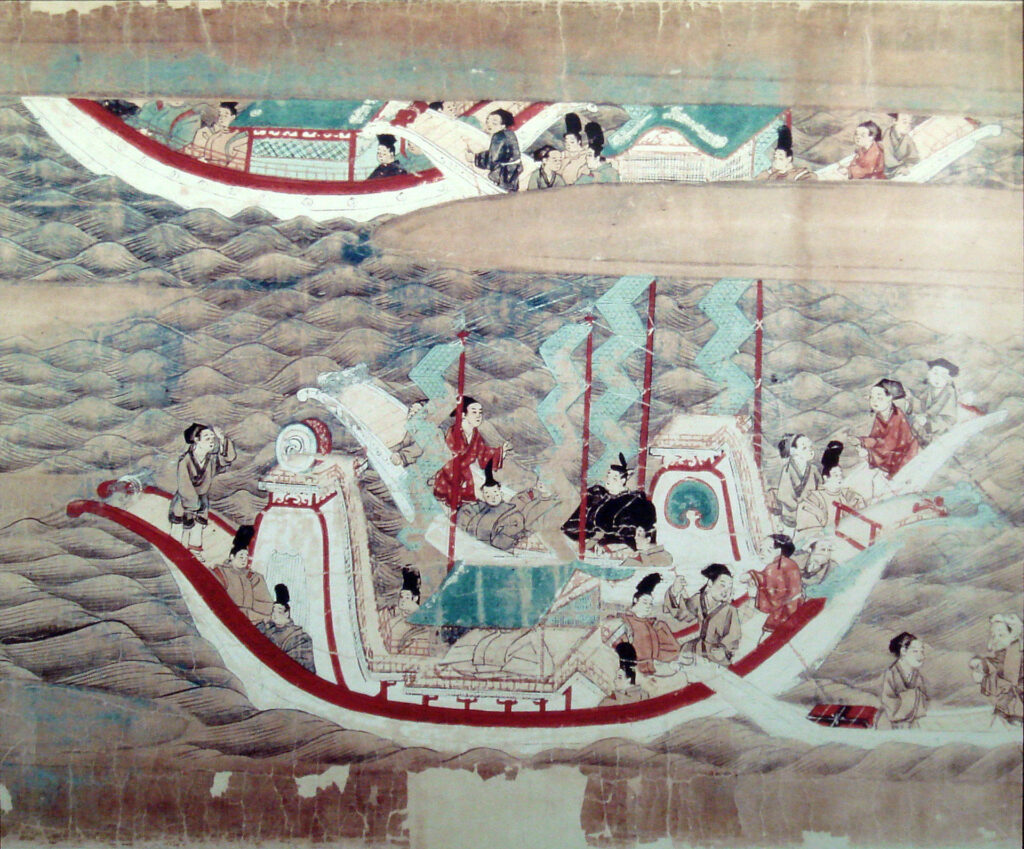
The history of tea in Japan dates back to the Nara and early Heian periods when it was brought from China. At that time, there was a tendency in Japan to learn and incorporate the culture, learning, and systems of the advanced Tang Dynasty (China) into their own country, and they sent envoys to the Tang Dynasty. Some of them were monks who studied Buddhism there. One of the most popular theories is that they learned about tea while studying Buddhism and culture in Tang China, and eventually brought it back to Japan.
In the Tang Dynasty, tea was used as a medicine, and in Japan, it was also used as a tonic and to recover from illness. The tea used in those days was called “Heicha”, which was made by steaming, grinding, and drying tea leaves into a solid form. When it was time to drink it, the tea was roasted over a fire, ground into powder, and boiled in hot water.
However, because tea was very valuable, only the upper class, such as the imperial family, powerful monks, and the aristocracy, could drink it. Therefore, the culture of tea did not spread to the general public and fell into disuse with the abolition of the envoys to China.
Japanese Tea Ancestor, Yousai and “Matcha Method”
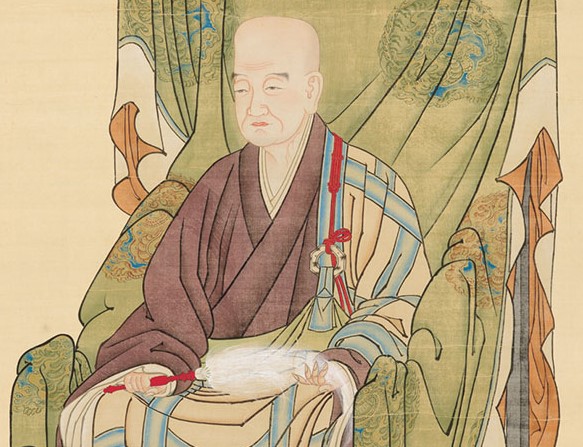
It was Yousai (1141-1215), a monk of the Kamakura period and founder of the Rinzai sect of Buddhism, who reintroduced this defunct tea culture to Japan. He is also famous for building the oldest Zen temple in Japan, Kenninji-Temple, in Kyoto.
During his second study abroad trip to the Song Dynasty (China), he studied the benefits and manners of tea and even brought back tea seeds for cultivation when he returned to Japan in 1191. He also left a great mark on the popularization of tea by writing a book on tea called “Kissa Yojoki,” which summarized the knowledge and benefits of tea.
Yousai also presented tea seeds to Myoe Shonin of Togano. This is said to be the beginning of Togano tea, and the tea derived from it was later regarded as the most venerable tea in Japan.
Myoe also spread the tea to Uji, and this has developed into the current “Uji tea”.
Evolution of Green Tea Mills
The Appearance of Tea Mortars
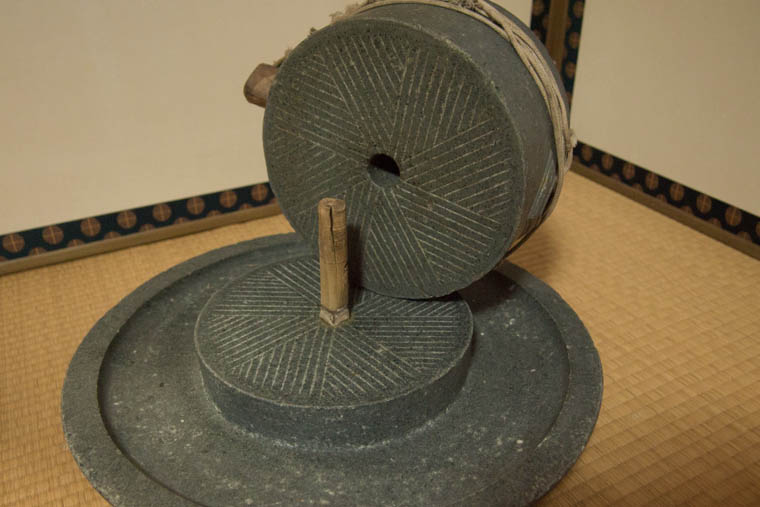
Up until this time, a “Yaken” was used to grind tea. This word means “to grind medicine,” and it was a tool used to grind medicine into powder to make it easier to drink.
From the looks of it, you would think that you would hold both ends of the central shaft rod and roll it around to crush it, but in reality, you would need to sharpen the blade of the sword against the wall of the V-shaped saucer.
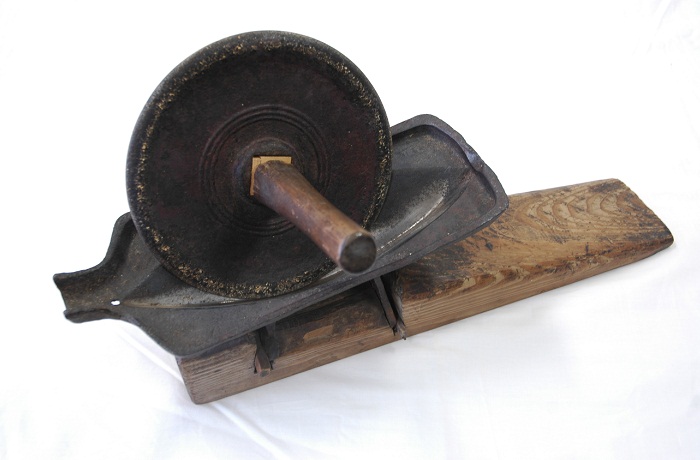
In the 14th century, the tea mortar was introduced. As you can see in the picture, both the upper and lower millstones have eight sections with 10-15 grooves cut in each section. When the upper millstone is rotated counterclockwise, the grooves on the upper and lower millstones intersect at a 45-degree angle, and the tea leaves are crushed as if they were being cut by a large number of scissors.
By using this tea mortar, tea leaves can be finely ground to particles of about 10 microns. For your information, salt is about 400 μm and potato starch is about 20-70 μm.
The fineness of the particles transcends the human tongue
It is said that the human tongue feels roughness when the particle size of the powder is over 30 microns. Matcha’s 10μm particle size can give humans a mellow texture without any roughness.
In addition, heat is inevitably generated when using a mixer or a mill, which are commonly used for grinding food. If the heat is too rapid, the color, aroma, and flavor of matcha will be lost.
Using a tea mortar also generates frictional heat, but it has the advantage that the temperature does not rise as much during grinding. For example, at a room temperature of 20 degrees Celsius, the tea mortar can run for an hour and still reach a temperature of 50 degrees Celsius at the periphery.
The Expansion of Tea Culture
The Art of Samurai Warriors’ Socializing
In the Muromachi period (1336-1573), samurai warriors began to use imported Chinese utensils for tea bowls, tea containers, flower vases, etc. and displayed them in private spaces called “Kaisho” (meeting rooms) in their residences to enjoy drinking tea. These tools from China are called “Karamono”. They are not limited to those from the Tang dynasty, including those from the Song, Yuan, and Ming dynasties.
A game called “Tohcha” was also popular among samurai warriors, in which they would compare matcha teas and guess the place of origin. This is a way to play the game of drinking tea from Tsugao, Kyoto as the main tea, and other teas as non-tea.
It was popular among samurai, aristocrats, and even some wealthy commoners, and there were times when Karamono tea utensils, swords, and gold dust were offered as merchandise.
The Origins of Wabi-Cha
From the late 15th century to the late 16th century, tea culture took a revolutionary turn. In contrast to the previous style of “Cha-no-Yu,” which was enjoyed in the midst of lively banquets and decorated with luxurious Chinese Karamono utensils, a new style of chanoyu emerged that used simple Japanese crafts and sought the beauty of Japanese deficiencies, such as “Renga” poetry. This was the establishment of Wabi-Cha, or the tea ceremony “Sado”.
The person who started the Wabi-Cha was Jyuko-Murata (1423-1502). He believed that tea should have a spirit of “chill and wither” and that tea should be served not only with Karamono tea utensils but also with Japanese tea utensils.
Wabi-Cha was further promoted by a merchant-turned-tea master named Jyouo-Takeno (1502-1555). While he owned many Karamono tea utensils, he also succeeded in adding the beauty of clean white wood to the tea ceremony by shaving bamboo to make his own tea scoops and cutting green bamboo to make lids.
The Philosophy of Sen-no-Rikyu

And it is Sen-no-Rikyu (1522-1591) who is known as the perfectionist of this Wabi-Cha style and is also called the Tea Saint. Rikyu’s style of that was to the extent that he attempted his own interpretation of tea utensils, especially tea bowls, and reduced the size of the tea room to the extreme smallness of one and a half tatami mats (about 2.5 square meters).
However, in this small tea room, one can directly feel the turmoil of the mind of the tea master who makes the tea. Here, we can feel Rikyu’s philosophy that the center of behavior at a tea ceremony is spiritual exchange.
In addition, since the walls as well as the shoji screens that separate the inside and outside of the tea room are made of extremely thin materials, the changes in the nature of the outside world can be felt from inside the tea room. Rikyu’s tea ceremony room gave form to the ambiguous sense of domain of the Japanese people, who view humans as part of nature and do not make a sharp distinction between self and others.
Rikyu was blessed with many disciples, and these disciples formed the Omotesenke and Urasenke schools of a modern tea ceremony. In other words, the origin of the tea ceremony lies in Rikyu’s Wabi-Cha.

